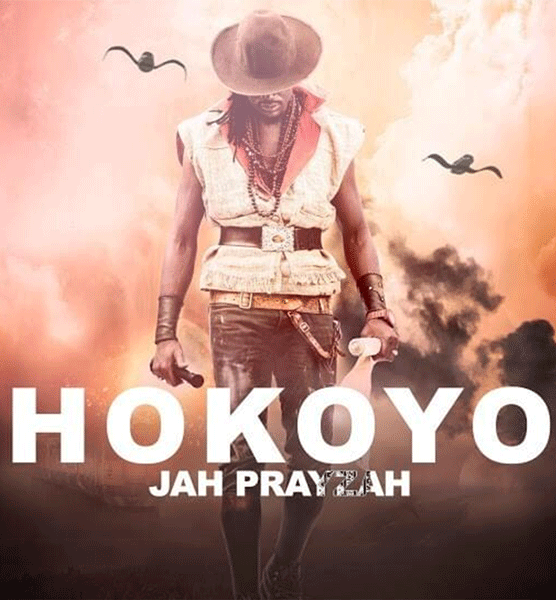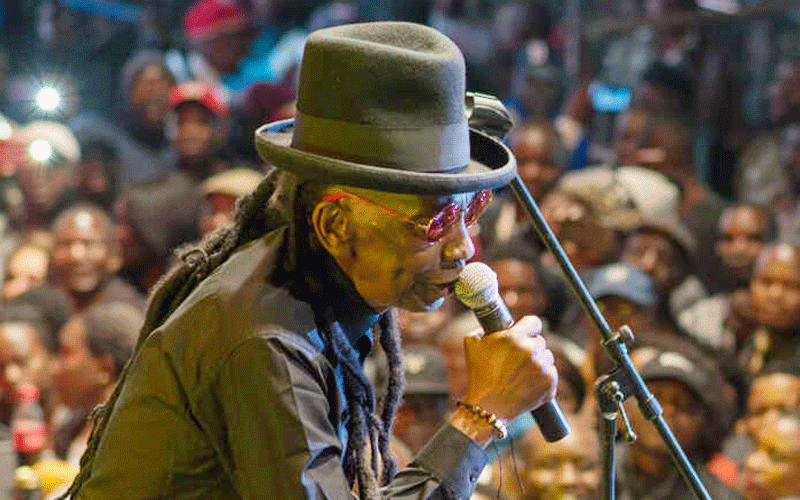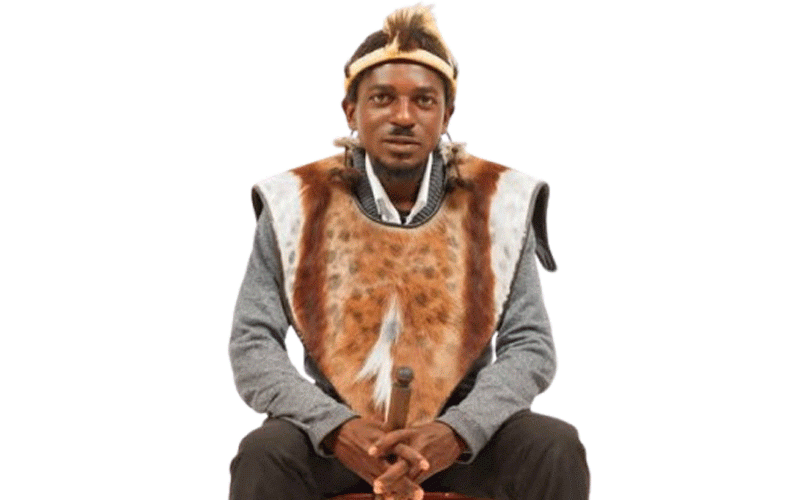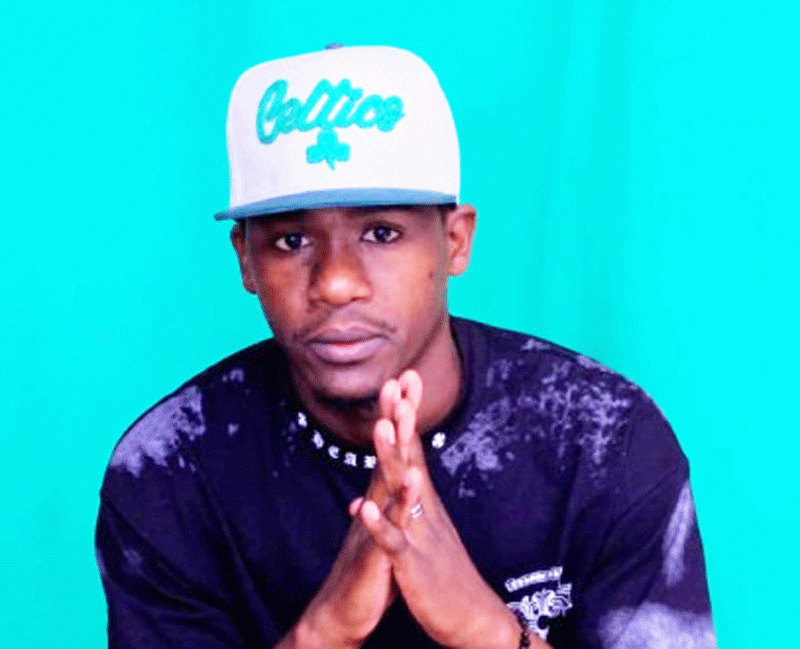
in the groove:with Fred Zindi
On March 16, I asked Keen Mushapaidze, Jah Prayzah’s manager, if the proposed album launch scheduled for April 3 was going ahead in view of the Covid-19 pandemic.
His response was: “Yes, we are a bit worried about this Covid-19 outbreak. We are, however, keeping our ears to the ground. Fortunately, the virus has not reached Zimbabwe yet. We only have suspected cases. We are hopeful that the virus won’t affect Zimbabwe. In Italy, they have banned all large gatherings including football matches, but in England because the number of known cases is still low, football matches are currently still going on. So, the situation as it is, does not call for postponement. We are going ahead with the album launch.”
Indeed, the Jah Prayzah camp was ready for the live launch. A lot of expensive preparations and rehearsals involving more than 40 people were taking place. However, the virus beat them to it and it was frustrating to see everything grinding to a halt.
That was back in March, but since then things began to change. There were now Covid-19 cases in Zimbabwe and nearby South Africa. Two weeks after my interview with Mushapaidze, we experienced a lockdown and live concerts for crowds of more than 50 people were banned. Thus, the proposal to launch the Hokoyo album on April 3 came to a stop.
It was not until May 19 that the Jah Prayzah camp thought of launching it virtually. But launching it virtually is different from a live launch. There are guys like Wicknell Chivayo who, on seeing crowds, will be happy to part with US$12 000 in front of the public. I doubt it if they would do the same if there is no crowd cheering them on.
It is now four months after the album was released that I now review it. It has taken me this long to listen to the 16 tracks on Hokoyo. In the past Jah Prayzah would personally bring to me copies of his albums or send Nigel or Simba to do it: from Tsviriyo, Sungano YeRudo, Kumbumura Mhute, Zvinondinetsa to Jerusarema.
In 2018, I was invited to an album listening party of Chitubu to give my input. However, in 2020 the JP camp was silent on the Hokoyo album. I did not receive a personal copy. My review therefore comes from the YouTube postings of the album.
- Chamisa under fire over US$120K donation
- Mavhunga puts DeMbare into Chibuku quarterfinals
- Pension funds bet on Cabora Bassa oilfields
- Councils defy govt fire tender directive
Keep Reading
Having paid close attention to all the tracks on the album, there is no doubt in my mind that Jah Prayzah with his local and international experience can only improve from his previous works. In my opinion, he has learnt how to compose songs about love, depression, score-settlling and tragedy. Aided by his self-taught and self-sufficiency, the result is an album that feels like retelling the Jah Prayzah story all over. On this album, he shows off his vocal range by introducing songs like Mukwasha where he displays a deep raspy voice. Here he sounds like a heavy drinker, which he is not. However, the song comes out genuinely beautifully as it descends into a Mutukudzi-ish crooning doobs in the end. It is difficult not to feel proud of Jah Prayzah’s efforts on the other songs as he addresses social problems with his positive bossanova Afro beat and shows off his gift for tune. Considering the kind of odd melodies that come out on tracks like Tonight, Mwana WaMambo, Nyaya YeRudo, Kwayedza and Dzirere, one begins to wonder how those unschooled structures can only come out of a musician who teaches himself and who is bold enough to show these songs to the whole world come out so beautifully. Of course, it helps that Jah Prayzah can write lines like Mwanangu Chiramwiwa. Enda Asi Usakanganwe Nzira Nechipo Chawapiwa. Usakanganwe kumba. This is showing us that JP has not forgotten where he comes from or his roots.
The album Hokoyo reminds me of Jah Prayzah’s 2014 album launch at which he featured the likes of Oliver Mutukudzi, Alick Macheso, Kapfupi, Peter Moyo, Progress Chipfumo, Pastor Charamba and several other musicians. He did not underestimate its audience. This time, he has done it again, but at a higher level with collaborations which feature South African singer Zahara and Zim Praise Choir. It is true that the Covid-19 pandemic has given time to Jah Prayzah not to only bond with his family, but to work even harder at improving his art. He seems to have done videos for all the 16 tracks on the album. That is a lot of work. These include the album title track, Hokoyo, plus Mukwasha, Munyaradzi, Wenge, Miteuro (featuring Zimpraise Choir), Kana Ndada (featuring Zahara), Mwana WaMambo, Tonight, Nyaya YeRudo, Asante Sana, Kwayedza, Eriya, Donhodzo, Chiramwiwa and Dzirere.
Many Jah Prayzah fans have already heard the above tracks, but it has taken me a good four months to listen to all of them. Here is my personal opinion of the album.
This sonically colourful, teemingly inventive album splices its title from the warning that there is going to be poverty one day and people should be prepared for the worst. Its African rhythmic inspirations, are all sewn into the tapestry of these 16 songs.
Some of these 16 tracks range from three minutes to six in length, some are evolving collages of booming gong-like sounds, hand-drum flurries, electronic harmonies or twisting improvisations. A minimally lonesome saxophone call might be answered by pattering tabla rhythms or soft electric guitar chords, while a deliciously lazy groove (such as that of the ambling Munyaradzi) triggers the rituals we all go through when we are faced with a sick relative. We go there to comfort the sick and ask God Kumberi Kuneyi? (What will happen after this?). This track surprisingly fuses some orchestral instruments. In all Jah Prayzah’s recordings, this is the first time I have come across the violin being played. Music students who are familiar with the word timbre will understand that this violin makes the quality of the musical sound different. There are pieces mixing distantly whispery vocals with Afro-beat, or spikier jams, colliding vocal exclamations and scurrying post-bop rhythms, as on the dancey Kwayedza, which is camouflaged with a mbira and brass introduction that spells out Mwana wemutema, ucharamba uri mutema (If you are a black child, you will always remain black), while the set’s finale, a reprise of the title track, is a bluesy guitar-accompanied folk song, on which Jah Prayzah’s raspy vocals and fragile acoustic-mbira rattlings are at their most minimally succinct.
Chiramwiwa is like eavesdropping on an evolving multilingual conversation, but one with an invite open to all. A grippingly riffy standout track is Donhodzo which has enjoyed massive airplay on all radio stations over the last four months. In line with South African singer Master KG’s chart-topping ditty, titled Jerusalema in which he proposes a dance challenge, Jah Prayzah also proposes the same. In his video he features sexy dancers and the most popular line here is Matambiro ake anoita kuti hana yangu inoti ga- ga.
Jah Prayzah is one man who has shown great passion for what he does and makes every effort to see that he does it properly.
Having listened to all his efforts over the last four months, I can assure you that the Hokoyo album is his best offering to date with more focus and direction at what he is doing. In the video for Mukwasha, he has taken his time to create a rural setting where a mukwasha (son-in-law) goes to the bride-to-be’s rural home, kneels down and agrees to pay the usual demands of lobola such as cows, goats and money in exchange for the girl.
In the collaboration song: Kana Ndada, it is quite refreshing to hear the voice of Zahara singing Sithandwa Sami, I suppose a translation from Jah Prayzah’s Kana ndichinge ndada munhu, ndada ini. I would rate this song quite highly although I am still yet to hear it receiving the amount of airplay Donhodzo gets. The next collaboration with Zim Praise Choir is a masterpiece. Here Jah Prayzah has gone religious as he performs the call and response pattern of the repeated refrain structure when he soulfully calls out: Baba and the choir sings in harmony: Tambirai miteuro yedu. Yakoveredzwa nemvuro shoko ratakatumira etc.
I notice that Asante Sana has been included on this album. I had expressed reservations at its inclusion in the 2017 Chitubu album because I felt that it was too political. I had advised Jah to stay away from the politics of the land at the time as it was too volatile. He had shown his anger at the incident that took place at Glen Forest a few months before and expressed this in song. He listened and dropped that title. He did not throw the song away. He shelved the idea, but here it comes again: Vanondikandira mabhanan’ana. Hamupore mukarwadziwa. Ndine hurombo shuwa/Datya kurinakurira warisimudzira wariyambutsira/Sandi nyore kusimudza. etc. On the whole, this is an excellent album. I would give it a five-star rating.
l Feedback: [email protected]











